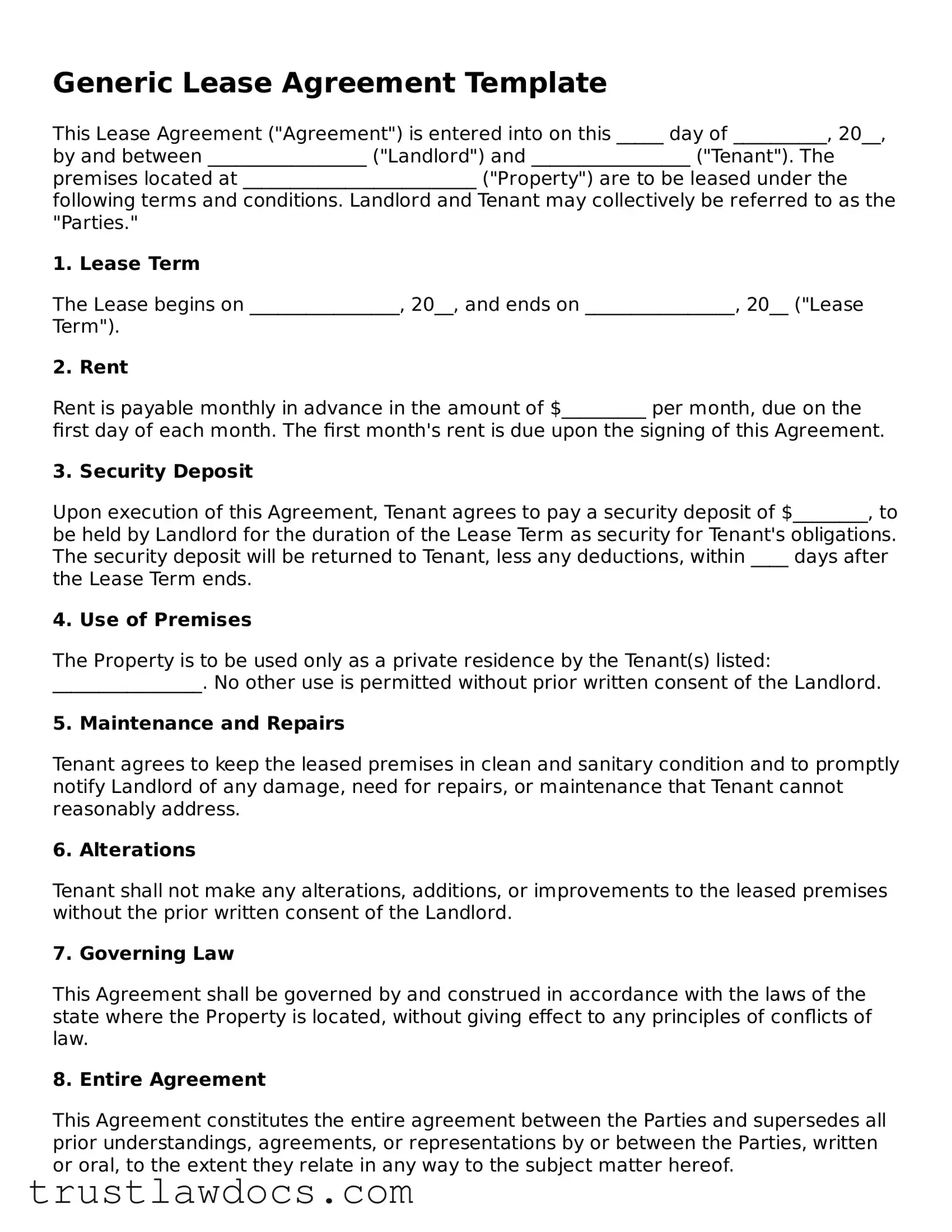What is a Lease Agreement?
A Lease Agreement is a legal contract between a landlord and a tenant that outlines the terms and conditions for renting property. This agreement typically includes details such as rental period, payment amount, and responsibilities of both parties regarding the property's maintenance.
Who needs to sign the Lease Agreement?
Both the landlord (or a representative of the landlord) and the tenant must sign the Lease Agreement. In cases where there are multiple tenants, such as in a shared apartment, each tenant should sign to ensure they are all legally responsible for complying with the terms of the agreement.
How long does a Lease Agreement last?
The duration of a Lease Agreement can vary. It often lasts for one year, but it can be set for any length of time as agreed upon by the landlord and tenant. Some agreements might be month-to-month, which allows either party to terminate the agreement with proper notice, typically 30 days.
Can a Lease Agreement be terminated early?
Yes, a Lease Agreement can be terminated early, but the conditions for doing so should be specified within the agreement. Early termination often requires notice and can involve penalties or the forfeit of a security deposit based on the terms agreed upon by the landlord and tenant.
What happens if someone breaks the terms of the Lease Agreement?
If a party breaks the terms of the Lease Agreement, the other party has the right to enforce the agreement. This might involve legal action, such as seeking damages or pursuing eviction in the case of a tenant's violation of lease terms. Remedies for breach of the agreement should be clearly outlined in the document itself.
Is a security deposit required in a Lease Agreement?
While a security deposit is commonly required, it is not mandatory for all Lease Agreements. If a security deposit is collected, the agreement should specify the amount, the conditions for its return, and any reasons part or all of it might be withheld at the end of the lease term.
How are repairs and maintenance handled in a Lease Agreement?
The Lease Agreement should clearly state who is responsible for repairs and maintenance of the property. Typically, landlords are responsible for major repairs and maintenance of common areas, while tenants might be responsible for minor repairs and maintenance within their leased space.
Can the rent be increased during the lease period?
Rent increases during the lease term are typically not allowed unless specifically stated in the Lease Agreement. For month-to-month leases or upon renewal of a lease, the landlord may adjust the rent, usually with proper notice to the tenant according to state or local laws.
Are pets allowed in the property under a Lease Agreement?
This depends on the terms of the Lease Agreement. Some agreements might expressly prohibit pets, while others may allow them with certain restrictions and possibly an additional fee or deposit.
What should be done if a tenant wants to renew the Lease Agreement?
If a tenant wishes to renew their Lease Agreement, they should begin discussions with their landlord before their current lease expires. The terms of the renewal, including any changes in rent or other conditions, should be outlined in a new agreement and signed by both parties.
